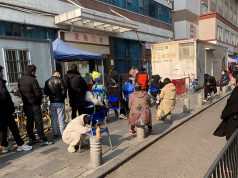As the world digs in for the second wave of COVID-19, flu season and winter, people also face a serious risk from reduced physical activity — especially older adults. Developing a plan to be physically active now will help you to stay strong and healthy through the long winter ahead.
While most people are aware of the benefits of physical activity — increased muscle and strength, reduced risk of disease, better quality of life and a lower risk of death — we tend to be less aware of how damaging and expensive reduced physical activity can be.
The loss of muscle and strength as you get older (known as sarcopenia) is something with which we are all familiar. We have all heard older family members say, “I’m just not as strong as I used to be,” or “I just can’t do that anymore.” But did you know that inactivity can make muscle loss a whole lot worse?
Health effects of inactivity
Physical inactivity can be forced on a person by an acute event such as a broken arm or leg or becoming bed-bound due to illness. However, reduced physical activity, such as step reduction, is a long-term choice that brings about multiple negative health consequences.
Insulin resistance (a warning sign for the development of type 2 diabetes), reduced muscle mass, increased body fat and poor sleep quality are just some of the health concerns caused by physical inactivity. Physical inactivity is also a major contributor to poor mental health and social isolation, which can be particularly problematic for older adults.
The health effects of inactivity start piling up within days.
McMaster University researchers have shown that reducing daily steps to fewer than 1,500 — similar to the activity level of people who are housebound during this pandemic — for just two weeks can reduce an older person’s insulin sensitivity by as much as one-third. The same period of inactivity also led to individuals over age 65 losing as much as four per cent of their leg muscle.
To make matters worse, once an older individual loses muscle, it is much more difficult to restore. Even when the research subjects returned to their normal daily routines, they did not regain their lost muscle. Effectively, older individuals simply don’t possess the same ability to bounce back that younger people do.
Regaining muscle requires deliberate effort. So, it truly is a case of use it or lose it.
Resistance is not futile
As a muscle physiologist with a keen interest in healthy aging, I’m pleased to report it’s not all doom and gloom. There are some things you can do — resistance exercise and eating your protein — to keep and even build muscle, get stronger and maintain your health for this winter and beyond.
The most effective way to maintain the muscle you have is strength training, or resistance exercise, which, put simply, means performing work against an additional load. And it doesn’t have to be complicated. If you have access to a gym to use free-weights and guided-motion machines, that’s great. However, there are many valuable alternatives you can easily do at home. Body-weight exercises such as push-ups, squats and lunges, elastic-band exercises and stair-climbing are just a few options that will help you to meet the World Health Organization’s latest physical activity guidelines.

(Pexels)
The good news for those who may be put off by the sound of resistance exercise is that doing any exercise with a high degree of effort will help you to get stronger and prevent (at least some) muscle loss. If, for any reason, performing resistance exercise isn’t possible, simply adding a walk, a bike ride or some lower-intensity strength exercises such as yoga or Pilates to your daily routine can have significant physical and mental health benefits.
Protein and muscle
Of course, a healthy diet and avoiding overeating are also critical to staying healthy. Protein-rich foods are particularly important, since they make you feel fuller for longer and provide building blocks for your muscles.
It is generally agreed that older adults need more protein than current guidelines suggest.
A good, easily achievable, target would be to eat 25 to 40 grams of protein with each meal (about one or two palm-sized portions). This equates to approximately 1.2 to 1.6 grams of protein per kilogram of body mass each day. Also, getting your protein from both animal (dairy, meat, fish, and eggs) and plant-based (beans, nuts, seeds, and lentils) sources may be beneficial.
Given how quickly inactivity and poor nutrition can sap your strength and your health, doing something now is the best way to power through the cold, dark winter and beyond.![]()
James McKendry, Postdoctoral Research Fellow in exercise physiology, muscle protein metabolism and aging, McMaster University. This article is republished from The Conversation under a Creative Commons license. Read the original article.










